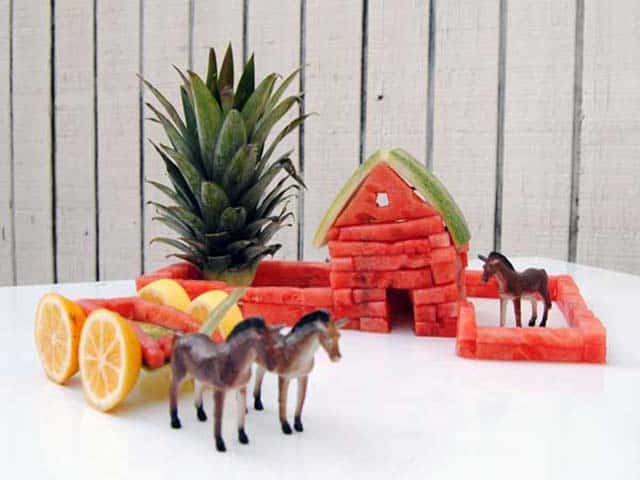Educators are always on the lookout for innovative and effective teaching strategies. One such approach that has gained popularity in recent years is hands-on learning. Hands-on learning helps foster a deeper understanding of academic concepts by actively engaging students in the learning process. This article explores how hands-on learning can be used to teach math and geometry through building.

Understanding the Concept of Hands-On Learning
Before diving into the specifics of teaching math and geometry through building, let’s first explore the concept of hands-on learning. Hands-on learning, also known as experiential education, is an educational approach that emphasizes learning through direct experience and active participation. Rather than passively absorbing information, students are encouraged to engage with materials, manipulate objects, and solve real-world problems.
Through hands-on learning, students develop a deeper understanding of concepts as they explore, experiment, and make connections between abstract ideas and tangible experiences. This approach not only enhances their academic performance but also cultivates critical thinking, problem-solving skills, and creativity.
The Importance of Experiential Education
Hands-on learning has been shown to have numerous benefits for students. Research has found that experiential education improves retention rates, as students are more likely to remember information that they have learned through hands-on experiences. Additionally, hands-on learning fosters active engagement, which has been linked to increased motivation and interest in the subject matter.
Moreover, hands-on learning allows students to develop a range of essential skills beyond the academic realm. By engaging in hands-on activities, students enhance their communication skills, collaborative abilities, and problem-solving capabilities. These skills are highly transferrable and prepare students for success in future academic pursuits and professional endeavors.
The Role of Hands-On Learning in Math and Geometry
Mathematics and geometry are subjects that often challenge students due to their abstract and theoretical nature. However, by using hands-on learning approaches, educators can bridge the gap between theory and practice, making these subjects more accessible and engaging for students.
Hands-on learning enables students to visualize mathematical concepts and see their real-world applications. Through building and construction activities, students can explore geometric shapes, spatial reasoning, and measurement in a tangible and practical manner. This concrete experience helps solidify their understanding of mathematical principles and enhances their ability to apply these concepts in various contexts.
Furthermore, hands-on learning in math and geometry provides opportunities for students to develop their problem-solving skills. When faced with a mathematical challenge, students are encouraged to think critically, analyze the problem, and devise creative solutions. This process not only strengthens their mathematical abilities but also nurtures their resilience and perseverance.
Additionally, hands-on learning in math and geometry promotes collaboration among students. By working together on projects and activities, students learn to communicate effectively, listen to different perspectives, and contribute their ideas to a collective goal. This collaborative environment fosters a sense of community and encourages students to appreciate the value of teamwork.
The Intersection of Building and Math
Building and construction projects provide an excellent opportunity to integrate math into students’ hands-on learning experiences. From measuring and calculating angles to understanding geometric properties, there are numerous mathematical concepts embedded in everyday building tasks.
How Construction Relates to Geometry
Geometry is at the core of many construction activities. As students engage in building projects, they encounter geometric shapes, lines, and angles. By measuring and manipulating these elements, students gain practical insight into geometric concepts such as congruence, symmetry, and parallelism.
For example, when constructing a simple wooden structure, students must consider angles and measurements to ensure the stability and balance of the structure. Through this process, they grasp the relationship between angles and stability, making the connection between mathematical principles and real-world applications.
Moreover, the study of geometry in construction extends beyond basic shapes and angles. Students can explore more complex concepts such as tessellations, fractals, and polyhedra. By incorporating these advanced geometric ideas into their building projects, students develop a deeper understanding of the intricate relationship between math and construction.
Mathematical Concepts in Everyday Building Tasks
Building projects also involve numerous mathematical concepts beyond geometry. Students can explore concepts such as measurement, proportion, and estimation through hands-on building activities.
For instance, when building a model bridge, students must carefully measure and cut materials to ensure the pieces fit together correctly. This requires them to apply measurement skills, understand proportions, and estimate quantities accurately. By engaging in these activities, students develop a deeper understanding of mathematical concepts in a practical and meaningful way.
Furthermore, construction projects often require students to work with budgets and cost estimates. They learn to calculate the cost of materials, labor, and other expenses, developing valuable financial literacy skills. This real-world application of math helps students understand the importance of budgeting and making informed decisions based on mathematical calculations.
In addition to measurement and budgeting, building projects provide opportunities for students to explore concepts such as scale, ratio, and spatial reasoning. By working with blueprints and architectural drawings, students learn to interpret and manipulate scale models, understanding the relationship between the physical world and its representation on paper.
Strategies for Teaching Math Through Building
Now that we understand the benefits of hands-on learning and its intersection with math and geometry, let’s delve into some strategies to effectively teach these subjects through building.
Incorporating Building Projects into Math Lessons
Integrating building projects into math lessons is an excellent way to engage students and make math more relatable. One approach is to start with a building task and then guide students to identify and apply mathematical concepts throughout the process.
For example, suppose the goal is for students to explore the concept of symmetry. The teacher could provide materials for building a simple structure and ask students to create a symmetric design. As students engage in the building process, the teacher can facilitate discussions about lines of symmetry and guide students to identify symmetrical elements within their structures.
By incorporating building projects into math lessons, educators create a hands-on experience where students can actively apply mathematical concepts and solidify their understanding.
Tools and Materials for Hands-On Math Learning
Equipping students with the right tools and materials is essential for hands-on math learning through building. Providing a variety of manipulatives, such as blocks, measuring tools, and geometric shapes, allows students to explore mathematical concepts more effectively.
When selecting materials, educators should choose items that are age-appropriate, safe, and versatile. For instance, different types of blocks can be used to teach measurement, proportions, and geometry. By offering a range of options, educators can cater to different learning styles and provide opportunities for students to approach mathematical concepts from various perspectives.
Assessing Learning Outcomes
As educators, it is crucial to assess student learning and evaluate the effectiveness of hands-on math learning through building. However, traditional assessment methods may not adequately capture the depth of understanding that students gain through hands-on experiences. Thus, alternative assessment strategies should be considered.
Evaluating Student Progress in Hands-On Learning
When assessing hands-on learning in math and geometry, educators should look beyond traditional tests and quizzes. Instead, they can use a combination of observation, student portfolios, and reflective journals to assess student progress.
By observing students as they engage in building activities, educators can gain insights into their problem-solving abilities, critical thinking skills, and understanding of mathematical concepts in real-world contexts. Additionally, student portfolios and reflective journals provide students with an opportunity to showcase their learning journey, document their insights and reflections, and articulate their understanding of mathematical principles.
Challenges and Solutions in Hands-On Math Assessment
While hands-on math assessment offers unique insights into student learning, it also presents challenges that educators need to address. One common challenge is the need for clear criteria and rubrics for evaluating student work.
By clearly articulating expectations and providing students with assessment criteria, educators can ensure that students understand the learning outcomes and know how they will be evaluated. Moreover, providing constructive feedback and opportunities for reflection can support students in their learning and growth.
Enhancing Student Engagement with Hands-On Math
Hands-on learning has the power to engage students and cultivate a love for math. By using building activities to teach math and geometry, educators can enhance student engagement and motivation in these subjects.
The Impact of Hands-On Learning on Student Motivation
Hands-on learning taps into students’ natural curiosity and desire for exploration, which in turn increases their motivation to learn. By providing students with the opportunity to actively engage with math and geometry through building, educators can foster a positive attitude towards these subjects.
When students see the direct application of mathematical concepts in hands-on activities, they develop a sense of relevance and purpose. This intrinsic motivation drives them to explore further, ask questions, and delve deeper into mathematical ideas.
Fostering a Love for Math Through Building Activities
Building activities offer a creative and immersive environment for students to discover the beauty and excitement of math. By incorporating open-ended building tasks that encourage experimentation and problem-solving, educators can foster a love for math in their students.
For example, allowing students to design and construct their own structures using a variety of materials empowers them to explore mathematical concepts independently. This autonomy in learning fosters a sense of ownership and encourages students to take risks, make connections, and develop a genuine passion for mathematics.
In conclusion, hands-on learning is a powerful tool for teaching math and geometry. By engaging students in building activities, educators can bridge the gap between abstract concepts and practical applications. Through hands-on learning, students develop a deeper understanding, enhance their problem-solving skills, and cultivate a love for mathematics. By incorporating hands-on learning strategies, educators can create engaging and meaningful learning experiences that empower students to become confident mathematicians.



